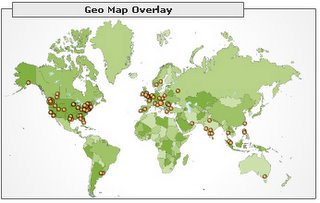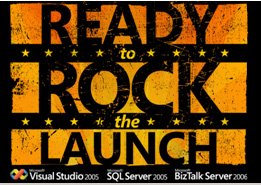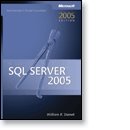The Feature Pack is a collection of standalone install packages that provide additional value for SQL Server 2005. It includes:
Latest versions of redistributable components for SQL Server 2005
Latest versions of add-on providers for SQL Server 2005
Latest versions of backward compatibility components for SQL Server 2005
Go here (
http://www.microsoft.com/downloads/details.aspx?familyid=d09c1d60-a13c-4479-9b91-9e8b9d835cdc&displaylang=en) to get to the page
The following things can be downloaded from that page
Microsoft ADOMD.NET
ADOMD.NET is a Microsoft .NET Framework object model that enables software developers to create client-side applications that browse metadata and query data stored in Microsoft SQL Server 2005 Analysis Services. ADOMD.NET is a Microsoft ADO.NET provider with enhancements for online analytical processing (OLAP) and data mining.
Microsoft Core XML Services (MSXML) 6.0Microsoft Core XML Services (MSXML) 6.0 is the latest version of the native XML processing stack. MSXML 6.0 provides standards-conformant implementations of XML 1.0, XML Schema (XSD) 1.0, XPath 1.0, and XSLT 1.0. In addition, it offers 64-bit support, increased security for working with untrusted XML data, and improved reliability over previous versions of MSXML.
Microsoft OLEDB Provider for DB2
The Microsoft OLE DB Provider for DB2 is a COM component for integrating vital data stored in IBM DB2 databases with new solutions based on Microsoft SQL Server 2005 Enterprise Edition and Developer Edition. SQL Server developers and administrators can use the provider with SQL Server Integration Services, SQL Server Analysis Services, Replication, and Distributed Query Processor. Run the self-extracting download package to create an installation folder. The single setup program will install the provider and tools on both x86 and x64 computers. Read the installation guide and Readme for more information.
Microsoft SQL Server 2000 PivotTable Services
PivotTable Services 8.0 is the OLE DB provider for SQL Server 2000 Analysis Services and is used to connect with an Analysis Services 2000 server. PivotTable Services does not work with SQL Server 2005 Analysis Services. Therefore, client applications that need connect to Analysis Services in both SQL Server 2000 and SQL Sever 2005 will need to install both PivotTable Services 8.0 and Analysis Services 9.0 OLE DB Provider in a side-by-side configuration.
Microsoft SQL Server 2000 DTS Designer ComponentsThe Microsoft SQL Server 2000 Data Transformation Services (DTS) package designer is a design tool used by developers and administrators of SQL Server 2005 servers to edit and maintain existing DTS packages until they can be upgraded or recreated in the SQL Server 2005 Integration Services package format. After installing this download, SQL Server 2005 users can continue to edit and maintain existing DTS packages from the Object Explorer in SQL Server 2005 Management Studio and from the Execute DTS 2000 Package Task Editor in Business Intelligence Development Studio, without needing to reinstall the SQL Server 2000 tools. The DTS package designer in this download was formerly accessed from the Data Transformation Services node in SQL Server 2000 Enterprise Manager.
Microsoft SQL Server Native ClientMicrosoft SQL Server Native Client (SQL Native Client) is a single dynamic-link library (DLL) containing both the SQL OLE DB provider and SQL ODBC driver. It contains run-time support for applications using native-code APIs (ODBC, OLE DB and ADO) to connect to Microsoft SQL Server 7.0, 2000 or 2005. SQL Native Client should be used to create new applications or enhance existing applications that need to take advantage of new SQL Server 2005 features. This redistributable installer for SQL Native Client installs the client components needed during run time to take advantage of new SQL Server 2005 features, and optionally installs the header files needed to develop an application that uses the SQL Native Client API.
Microsoft SQL Server 2005 Analysis Services 9.0 OLE DB Provider
The Analysis Services 9.0 OLE DB Provider is a COM component that software developers can use to create client-side applications that browse metadata and query data stored in Microsoft SQL Server 2005 Analysis Services. This provider implements both the OLE DB specification and the specification’s extensions for online analytical processing (OLAP) and data mining.
Note: Microsoft SQL Server 2005 Analysis Services 9.0 OLE DB Provider requires Microsoft Core XML Services (MSXML) 6.0, also available on this page.
Microsoft SQL Server 2005 Backward Compatibility Components
The SQL Server Backward Compatibility package includes the latest versions of Data Transformation Services 2000 runtime (DTS), SQL Distributed Management Objects (SQL-DMO), Decision Support Objects (DSO), and SQL Virtual Device Interface (SQLVDI). These versions have been updated for compatibility with SQL Server 2005 and include all fixes shipped through SQL Server 2000 SP4.
Microsoft SQL Server 2005 Command Line Query UtilityThe SQLCMD utility allows users to connect, send Transact-SQL batches, and output rowset information from SQL Server 7.0, SQL Server 2000, and SQL Server 2005 instances. SQLCMD is a replacement for ISQL and OSQL, but can coexist with installations that have ISQL or OSQL installed.
Note: Microsoft SQL Server 2005 Command Line Query Utility requires Microsoft SQL Server Native Client, also available on this page.
Microsoft SQL Server 2005 Datamining Viewer Controls
The Data Mining Web Controls Library is a set of Microsoft Windows Forms controls that enable software developers to display data mining models created using Microsoft SQL Server 2005 Analysis Services in their client-side applications. The controls in this library display the patterns that are contained in Analysis Services mining models.
Note: Microsoft SQL Server 2005 Datamining Viewer Controls requires Microsoft SQL Server 2005 Analysis Services 9.0 OLE DB Provider, also available on this page.
Microsoft SQL Server 2005 JDBC Driver
In its continued commitment to interoperability, Microsoft will release and support a new Java Database Connectivity (JDBC) driver for SQL Server 2005. The SQL Server 2005 JDBC Driver download is available to all SQL Server users at no additional charge and provides access to SQL Server 2000 and SQL Server 2005 from any Java application, application server, or Java-enabled applet. This is a Type 4 JDBC driver that provides de-facto database connectivity through the standard JDBC application programming interfaces (APIs) available in J2EE (Java2 Enterprise Edition).
Microsoft SQL Server 2005 Management Objects CollectionThe Management Objects Collection package includes several key elements of the SQL Server 2005 management API, including Analysis Management Objects (AMO), Replication Management Objects (RMO), and SQL Server Management Objects (SMO). Developers and DBAs can use these components to programmatically manage SQL Server 2005.
Note: Microsoft SQL Server 2005 Management Objects Collection requires Microsoft Core XML Services (MSXML) 6.0 and Microsoft SQL Server Native Client, also available on this page.
Microsoft SQL Server 2005 Mobile Edition
Use SQL Server 2005 Mobile Edition (SQL Server Mobile) to rapidly develop applications that extend enterprise data management capabilities to mobile devices. For the latest SQL Server Mobile add-ins, updates, tools, and components, visit the
SQL Server Mobile Download site.
Microsoft SQL Server 2005 Notification Services Client Components
The SQL Server 2005 Notification Services Client Components package provides client APIs that enable subscription management and event submission within custom applications that include SQL Server 2005 Notification Services functionality. The subscription management APIs allow developers to create subscriptions and subscribers, and manage subscriber devices. The event submission APIs allow users to specify events using the event APIs or stored procedures.
Microsoft SQL Server 2005 Upgrade Advisor
Upgrade Advisor analyzes instances of SQL Server 7.0 and SQL Server 2000 in preparation for upgrading to SQL Server 2005. Upgrade Advisor identifies deprecated features and configuration changes that might affect your upgrade, and it provides links to documentation that describes each identified issue and how to resolve it.
Microsoft .NET Data Provider for mySAP Business Suite, Preview Version
SQL Server 2005 includes support for accessing SAP data by using the Microsoft .NET Data Provider for mySAP Business Suite. This provider lets you create an Integration Services package that can connect to a mySAP Business Suite solution and then execute commands to access data via supported interfaces. You can also create Reporting Services reports against a server running the mySAP Business Suite.You can use the Microsoft .NET Data Provider for mySAP Business Suite in the SQL Server Import and Export Wizard and in various Integration Services features (including the Script task, the DataReader Source component, and the Script component), as well as the data processing extensions in Reporting Services.The Microsoft .NET Data Provider for mySAP Business Suite is not included in SQL Server 2005. The preview version is licensed as pre-release software as outlined in the License Terms. See the Readme included with the download for information on the prerequisites for using the Microsoft .NET Data Provider for mySAP Business Suite.
Reporting Add-In for Microsoft Visual Web Developer 2005 ExpressThe Reporting Add-In for Microsoft Visual Web Developer 2005 Express includes a ReportViewer control, an integrated report designer, and a comprehensive API that lets you customize run-time functionality. You can use the control to add interactive real-time data reports to your ASP.NET Web applications. Reports can use data from any ADO.NET DataTable or custom Business object. You can create reports that combine tabular, matrix, and visual data in free-form or traditional report layouts. An integrated report designer is included so that you can create the custom reports that bind to the control.The Reporting Add-In is the same reporting component that is included with other editions of Visual Studio, but without support for Windows Forms applications. For more information including product documentation and samples, see the
ReportViewer Controls (Visual Studio) topic on MSDN.



